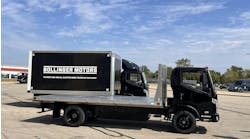Everyone these days seems to be in a hurry and truckers are no different whether driving for a fleet or for themselves. But a recent Technology Overview published by the North American Council for Freight Efficiency offers some real evidence about the cost of speeding and the fact that going fast does not actually get you there much sooner. In fact four major U.S. fleets reported no significant loss in productivity in 98% of their freight shipments after slowing down their trucks. And in cases where there was a loss the difference was measured in minutes per day.
The obvious upside of limiting speed is a savings in fuel. Industry statistics say fuel consumption is increased on average by 0.1 mpg for every mile per hour above 55 mph. In effect going from 55 mph to 65 mph costs you 1 mpg. Don’t forget to add in the 1% reduction in tire life and the increase in maintenance that comes from making the powertrain work harder.
Those are all real and measurable results of slowing down. But what about the effect on the driver? I have some first hand experience with this. I travel around the country most of the year pulling a 5th wheel camper behind a diesel pick-up truck. I’ve been known to exceed the speed limit but given what I do for a living I thought I should start practicing what I preach so I slowed down. I did, in fact, see that real gain in fuel economy, but I also found that by slowing down I arrived at my destinations much less stressed and way less tired than I previously had been. It was shockingly noticeable and all I can do is attribute it to the fact that I was no longer expending my energy trying to move my 50 ft. truck and trailer into the passing lane, getting around the slower traffic and then coming back to the right lane. Now I may go 20 miles or more without passing anyone, and driving is much more enjoyable.
I’ve told this story about two dozen times and the truckers I told it to say that switching lanes is indeed stressful, taxing and tiring.
So if saving fuel and wear and tear on your truck aren’t good enough reasons to slow down, how about doing it to have a higher quality of life during and after that full day of driving?



